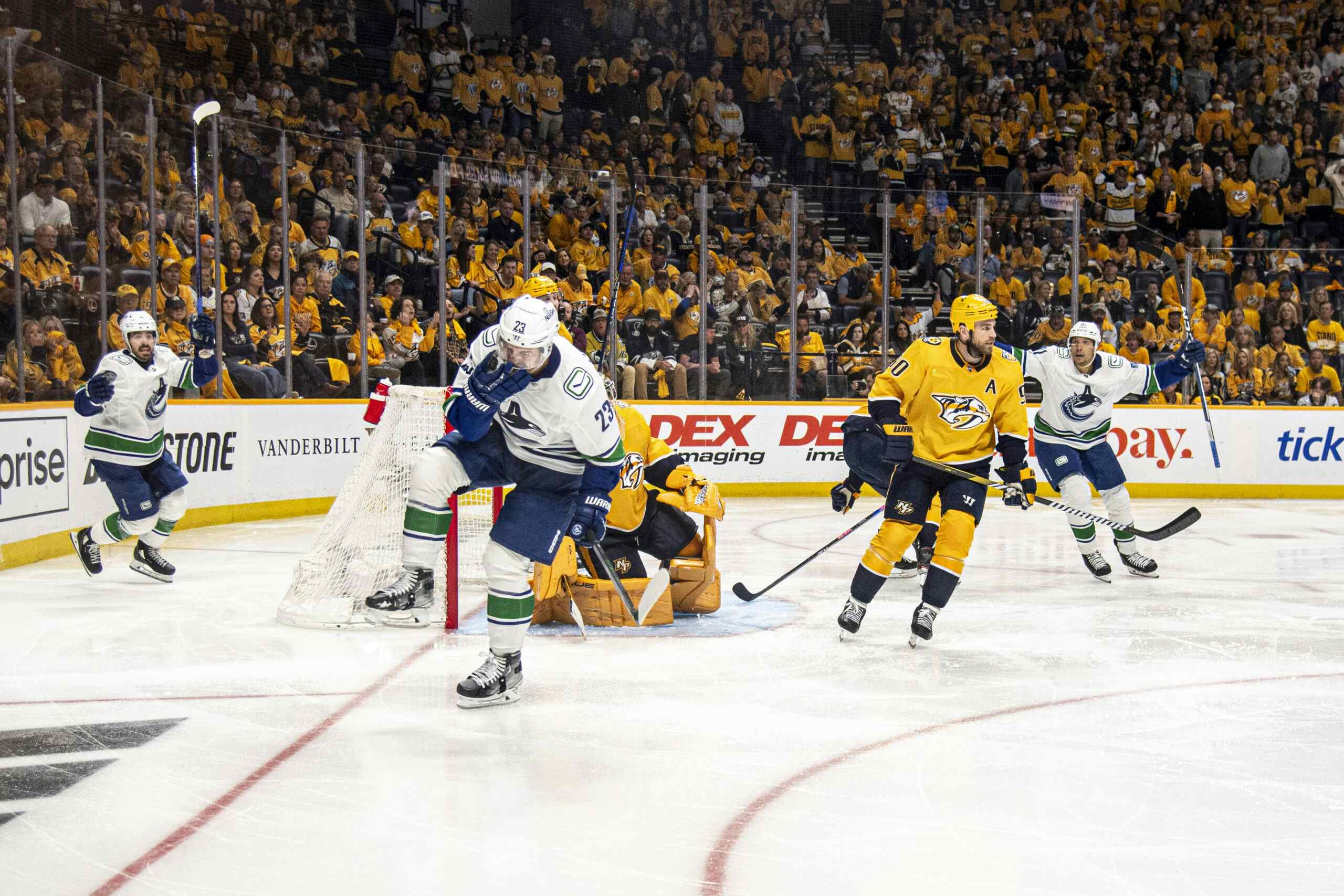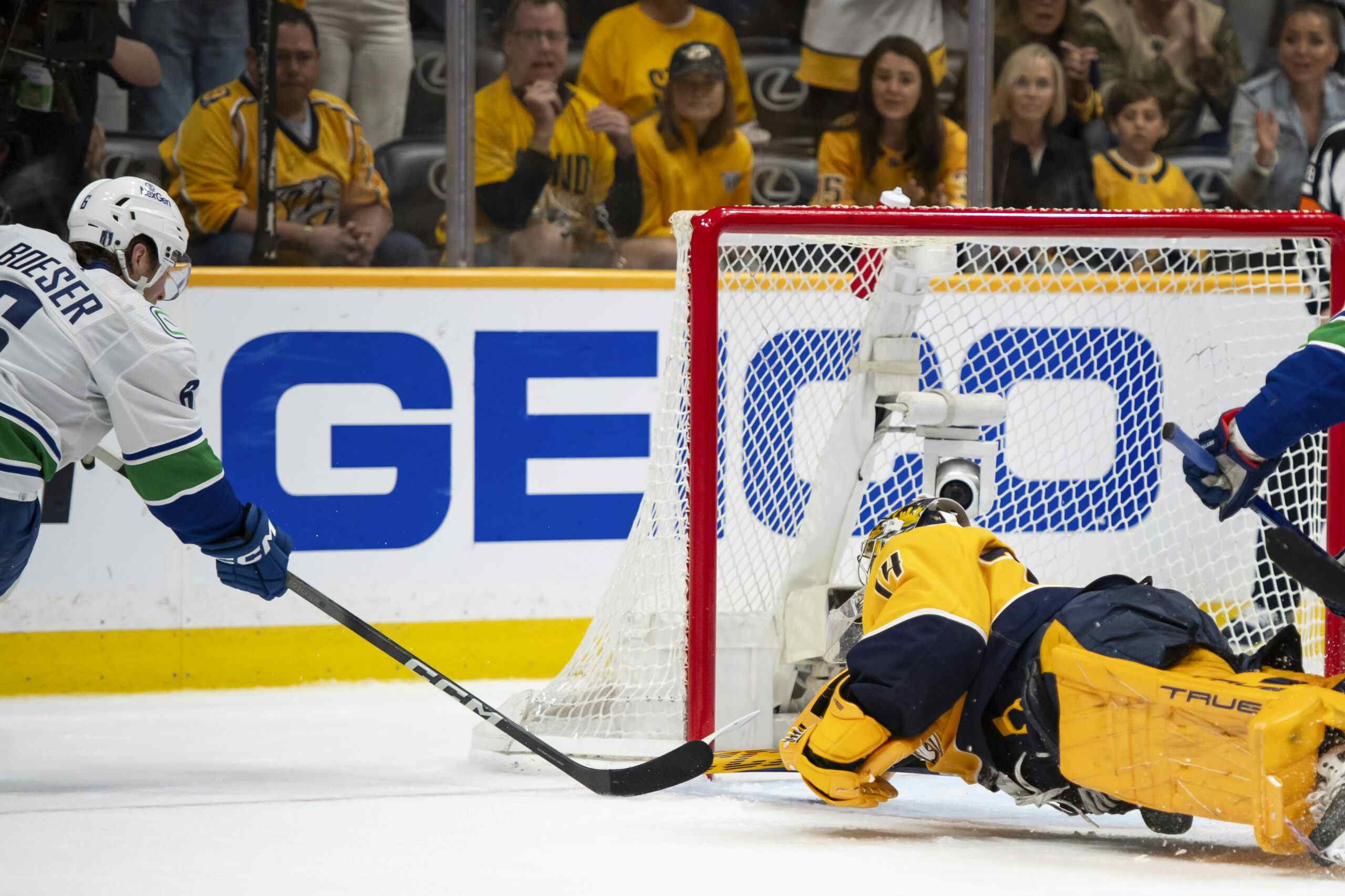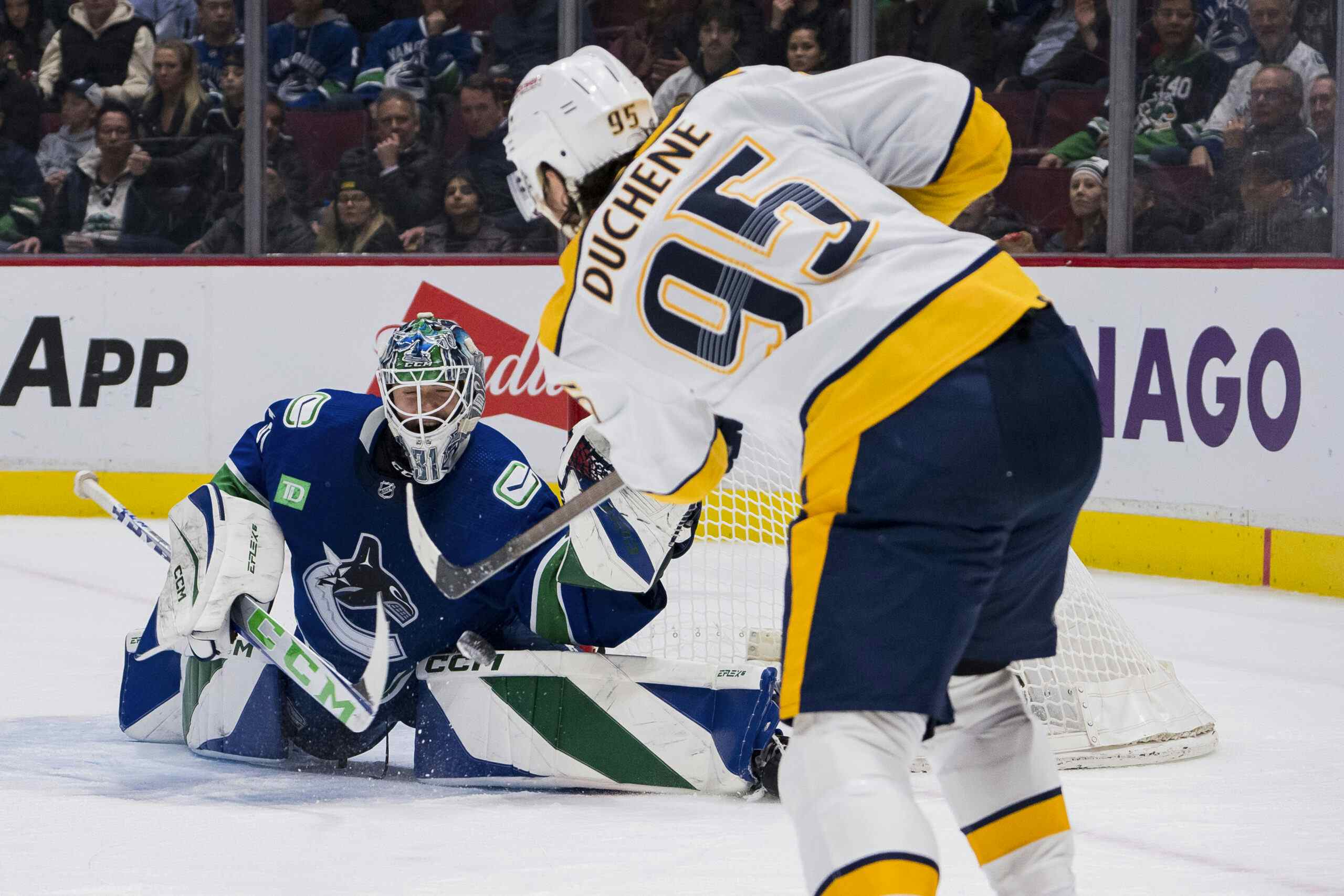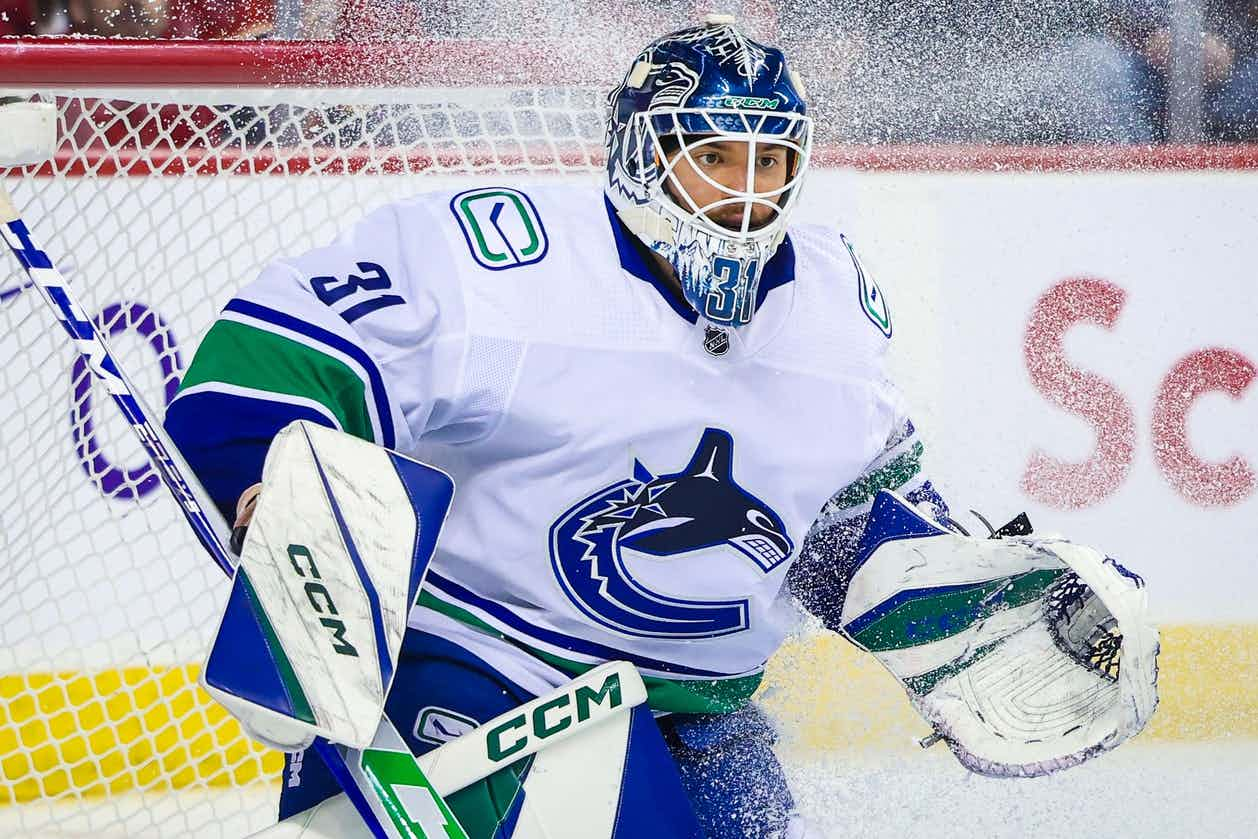Where the Mild Things Are
Coming into Thursday night’s convincing 4-1 win over the Minnesota Wild, the Vancouver Canucks had been the only division leader in the league who had yet to really impress anybody. Maybe that sentiment is too negative, certainly the goaltending has been stellar (unsustainably stellar, actually), but it’s fair to say that the majority of observers (fans, media, whatever) have found the club’s conservative low-event stylings, the paralytic power-play, and the inability to hold two goal leads to be concerning.
I think the mood has shifted a bit following Vancouver’s comeback win over the Oilers on Monday, and their blowout of the Wild on Thursday. These were supposed to be the two teams that were improved enough to challenge the Canucks’ stranglehold on Northwest Division supremacy! At least they were supposed to be able to hang around in the standings until Ryan Kesler returned to Vancouver’s lineup. But that hasn’t been the case, as the Canucks have proven cagey enough – or perhaps it’s that their goaltending has proven stingy enough – and the team has managed to pick up points even on off nights.
At long last on Thursday night in Minnesota, the Canucks brought it out of the gate and put away an inferior opponent early. This was not an off night for the club. Read on past the jump.
- We’ll start, how else, but with the most important numbers. The Vancouver Canucks were out-chanced by the Minnesota Wild by a final tally of 15-8. The Wild did most of their damage on the power-play recording eight scoring chances with the man-advantage. At evens, the two clubs recorded seven scoring chances a side, but obviously that number is "score effects" inflated. In fact the Wild only recorded a single solitary scoring chance in either a "game tied" or "game close" game state.
- While the Canucks controlled this game and put it away early, Minnesota had a reasonable push back in the first fifteen minutes of the second period. In a four minute span from 3:58 to 7:58 of the middle frame, the Minnesota Wild managed six scoring chances, four of them "difficult shots" and Schneider was up to the task. In all, the Wild managed nine scoring chances in the period, none of which foiled Schneider. He stopped ten of eleven difficult shots on the evening, in addition to foiling 21 of 22 total Wild shots. So yeah, Cory Schneider is a pretty good goaltender and I think the Canucks should keep him.
- Daniel Sedins goal to open the scoring was the result of shrewd opportunism on the part of both Alex Burrows and Daniel. Burrows took advantage of a very strange neutral zone bounce, as a slow rolling Dan Hamhuis pass ricocheted like cow manure off the wall beyond Vancouver’s blueline. The bounce was tough to anticipate and it pulled the Wild out of position as Burrows streaked cleanly into the offensive zone with the puck. Burrows took a hard, low back-hander at Niklas Backstrom’s far pad, and Backstrom spewed the puck into the slot right onto the stick of Daniel Sedin. Sedin, who had toughed out a hook from Zack Parise and still flat out beat the speedy American winger in a race to the front of the net, made no mistake on the loose puck.
- Wait, Daniel Sedin beat Zach Parise in a foot race?
- It happened. Check it out:
- Vancouver’s second goal came right as a power-play expired, as Chris Higgins deflected a Maxim Lapierre shot from the top of the circle through Niklas Backstrom’s five-hole. Nice to see Chris Higgins get a goal, he’s been hounded for lacklustre play in the early going when really he’s facing some of the hardest competiton on the team. You want to know who is really filling Ryan Kesler’s role in the two-way centre’s absence? It’s Higgins, who has spent every game chasing around the likes of Kopitar, Getzlaf, Kane and Hemsky. The next time you see Higgins struggle to skate out a rush on the counter attack, just remember that what he’s doing is more like – to use a basketball analogy – ace Spurs defender Bruce Bowen (back in the day) spending an entire offensive set waiting for the corner three after checking Kobe, than it is like"Higgins has lost a gear."
- Defenseman Jason Garrison, who has been critcized extensively for his rocky first month as a Canucks blue-liner (though I continue to be impressed by his possession game, frankly), picked up an assist on Higgins’ goal but he wasn’t all that involved in it really. Assist and especially secondary assists, are kind of stupid.
- Which is sort of why, I think, the Rogers Sportsnet broadcast was so insistent about Jordan Schroeder being credited with an assist on Mason Raymond’s second period power-play goal. On Mason Raymond’s goal, Jason Garrison shoots a puck through traffic and it ended up on Jordan Schroeder’s stick in the slot. The impressive rookie centre – for whom, Thursday night’s game was a homecoming – dove and took a dangerous looking backhander that Backstrom stopped. The puck was swatted at by prone Wild defender Clayton Stoner, and rolled directly to Mason Raymond who deposited the puck neatly into the open cage from thirty feet out.
- So to recap: Jason Garrison picks up an assist for a routine pass, but doesn’t pick one up for a smart play to get a shot past the first defender. Meanwhile Jordan Schroeder doesn’t get one for creating enough panic idown low that a Wild defender is forced to make a desperation swipe at the puck while lying on the ground, leading to Mason Raymond drilling the puck into an open net. Assists don’t really tell you all that much about what a player has done to actually create a goal…
- Mason Raymond certainly deserved his on Jannik Hansen’s goal, however, as he flipped a pass up ice that Jannik Hansen caught and capitalized on to really, emphatically put the game away with just a minute remaining in the second period. In the third, on a non-scoring chance, Jannik Hansen drove down the right-wing and drilled a slapshot that flustered and handcuffed Josh Harding (he had replaced Nik Backstrom by this point) who couldn’t control the rebound. I’d really like to see Jannik Hansen try shooting one of those from the slot, or from the top of the circle when the team is set up in the offensive zone. The velocity the Danish speedster gets on his slapper is a serious weapon, and if he can figure out how to harness it he might be able to improve on his 10.1% career shooting clip and turn into a consistent twenty goal scorer. At worst he’d create a tonne of rebound opportunities.
- Vancouver’s power-play managed to convert once tonight (and nearly twice, but missed out by a half of a second on Higgins’ goal), but really it wasn’t very good. Actually neither was the penalty killing, which looked a bit like a firedrill in the second period. But back to the first power-play unit which, in particular is just not producing much of anything in terms of shots or chances. Henrik Sedin, for example, wasn’t "in" on the creation of a single scoring chance in Thursday night’s game. That’s cause for concern, because it’s just happening way to frequently this season.
- I really dig the Maxim Lapierre, Chris Higgins, Zack Kassian third line. Kassian proved he can be a regular option with the Sedins (perhaps in particularly chippy games, or when Alain Vigneault wants a big body to battle in front of the net against certain matchups), but realistically I’m not sure he’s a "top-line" forward at this stage in his career. He’s twenty-two so there’s nothing wrong with that, but I do wonder if he’s better suited to banging bodies and contributing offense occassionally in the third-line role. Kassian rrecorded two scoring chances against the Wild on Thursday, which was actually the most recorded by any individual Canucks skater.
- Jordan Schroeder has played well, especially on the power-play, but he was mostly started in the offensive zone in this game. That said he saw some tough competition (against Mikko Koivu’s line) while the game was close in the first perio and impressively won one of two draws against Koivu and four out of seven draws against Brodziak – both of whom are quality faceoff men. That sort of performance will help keep him in the lineup. You have to think that Schroeder’s play will have made Vancouver’s decision about whether or not to keep him on the NHL roster or return him to the AHLwhen Kesler returns, a difficult one.
Scoring Chances
A chance is counted any time a team directs a shot cleanly on-net from within home-plate. Shots on goal and misses are counted, but blocked shots are not (unless the player who blocks the shot is “acting like a goaltender”). Generally speaking, we are more generous with the boundaries of home-plate if there is dangerous puck movement immediately preceding the scoring chance, or if the scoring chance is screened. If you want to get a visual handle on home-plate, check this image.
Individual Scoring Chance Totals
| Player | Chances Taken | Chance Assists | Total Chances |
|---|---|---|---|
| Zack Kassian | 2 | 0 | 2 |
| Mason Raymond | 1 | 1 | 2 |
| Daniel Sedin | 1 | 0 | 1 |
| Jason Garrison | 1 | 0 | 1 |
| Jannik Hansen | 1 | 0 | 1 |
| Jordan Schroeder | 1 | 0 | 1 |
| Aaron Volpatti | 1 | 0 | 1 |
| Dale Weise | 0 | 1 | 0 |
| Maxim Lapierre | 0 | 1 | 0 |
| Chris Higgins | 0 | 1 | 0 |
Team Scoring Chance Totals
| Team | 1st | 2nd | 3rd | Total |
|---|---|---|---|---|
| Vancouver (EV) | 2 (0) | 6 (4) | 0 (0) | 8 |
| Minnesota (EV) | 1 (0) | 9 (3) | 4 (2) | 15 |
Recent articles from Thomas Drance






